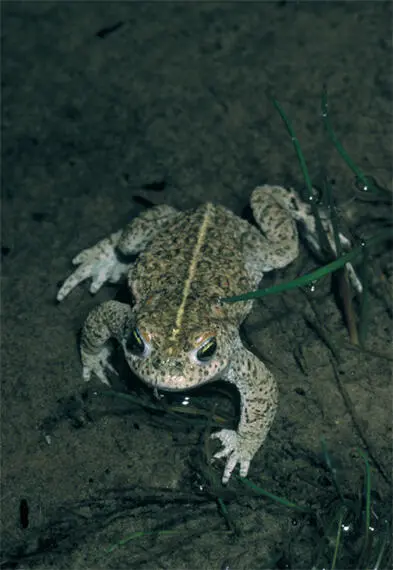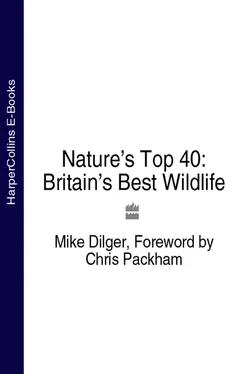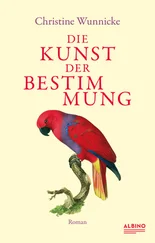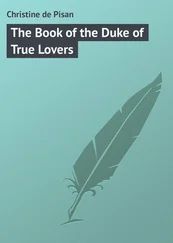Our Top 40 was compiled from contributions by members of the public, following a request on the BBC Nature’s Calendar website for their suggestions. The 40 most popular suggestions put forward were then ‘moulded’ into an order by a panel of wildlife experts who argued (I believe well into the night) on the relative merits of each species and exactly why, for example, the thrilling clouds of butterflies, which was positioned at no. 27, deserved a higher spot than the enchanting light show put on by glow-worms at a more lowly number 38.
The factors taken into account when compiling this list included a combination of how unique the spectacle is to Britain, and a ‘thrill-ability factor’. Some of the entries in our ‘wildlife chart’ involve huge numbers of one species, such as pink-footed geese returning to roost, or bluebells flowering synchronously in a spring wood; others comprise either fewer or single individuals with particularly remarkable or fascinating behaviour, such as spiders building webs or great crested grebes courting. The best spectacles inevitably involved large numbers of one species (or a combination of species) acting in a remarkable manner, with Britain additionally being the best place in the world to view that event. The prime example of this is gannets diving, which deservedly made our number 1, because Britain holds an astonishing 63 per cent of the world population of gannets, and the very sight of flocks of these birds pelting into the water is frankly breathtaking.

It is important to bear in mind that these spectacles have not, of course, evolved for our viewing pleasure, and we are nothing more than voyeurs in what serve as vital functions in the mating and survival games of each of our entries. So, in addition to helping you find out more about how to come across each spectacle, the body of the book is primarily written to enable you to understand exactly what is going on and why, which should hopefully enhance your enjoyment and renew your appreciation of the wonderful wildlife still eminently viewable on and around the British Isles.
We make no apologies for the order of our Top 40; you may not agree with it but, hopefully, it may just occasionally form a stimulus for conversation in place of the latest TV series plotline. Perhaps you will be encouraged to make your own ‘Wildlife Hit Parade’. The primary motive behind the series and this book is, unashamedly, to encourage people to jump off their sofas, turn off their television sets and stow away the computer games console in order to get some fresh air in their lungs and a few spectacles under their belts instead.
Finally, with some insider information, the vast majority of these spectacles can be seen with a little planning and the requisite luck. Only when the joy or ‘Gospel of Wildlife Watching’ spreads to as many people as possible (irrespective of the order in which we place them), will these plants, the animals and their habitats be truly cherished, valued and conserved for future generations.
The ‘Birkdale nightingale’, ‘Bootle organ’ and ‘Thursley thrush’ are all regularly used colloquial monikers that, in certain regions, have replaced the more commonly accepted name of our smallest and rarest British toad, the natterjack. The reason why such a seemingly inconspicuous and rare toad should been given so many local nicknames is purely down to its incredible ratchetlike call, which marks the highlight of its breeding season, and is also a tremendous spectacle for anybody with a penchant for toadspotting.
Natterjack toads
WHEN
April to mid-May
WHERE
Ainsdale NNR, Merseyside; Caerlaverock Nature Reserve (WWT), near Dumfries

‘Do not park here! The solid yellow line is the key identification feature of the natterjack toad.
David Woodfall
This diminutive relation of our common toad is entirely restricted to Europe, with its heartland being the Iberian Peninsula, and becoming progressively rarer further north. In Britain the natterjack was widely if locally distributed around southern and western coastal locations, but healthy populations can now only be found along the northwest English coast around Merseyside and in southwest Scotland centred on the Solway Firth.
To the untrained eye, natterjacks are similar to the common toad, but their size of no more than 75 millimetres, dry brownish to olive-green warty skin and yellow stripe, which runs the length of their backbone like a ‘no-parking here’ line, easily distinguishes this wonderful and mercurial little toad. In addition, natterjacks have short hindlimbs, giving them the ability to run at surprising speeds over short distances. Unlike common toads, where the females are generally larger, there is little difference in the size of the natterjack sexes, even when the females are bursting with eggs and ready to spawn.
Natterjacks in Britain are now found almost exclusively among sand dunes and the periphery of salt marsh close to our coastlines; they will always be below 100 metres above sea level. Befitting a species that is most abundant in Spain, it is no coincidence that this is one of the warmest habitats in Britain. These sandy spots are also perfect for a species that is a compulsive burrower, meaning that natterjack toads are easily able to dig down to escape from the extremes of temperature. The short, dense vegetation attracts lots of invertebrate prey, and, as sandy places are also well drained, natterjacks have evolved to breed in ephemeral freshwater pools and ponds in the dune slacks. A typical breeding site will often be no more than a small, sandy, shallow and unvegetated pool with a maximum depth of 30 to 50 centimetres that will often have completely dried out by the height of summer.
In common with all our native amphibians and reptiles, the natterjack is a species that opts out of the coldest autumn and winter months by hibernating. In the case of natterjacks, this time is spent underground in self-excavated burrows either alone or with other toads, with the largest number – an astonishing 44 – recorded by the celebrated herpetologist Trevor Beebee.
On good nights you might get the impression that you had dropped in at the Okavango delta or the Amazon basin at dusk rather than it being just a misty night on Merseyside!
After this period of torpor, the toads then emerge into the light in March or early April once the air temperatures have warmed up sufficiently to sunbathe.
Adults leaving their hibernacula, or winter residence, have usually only two things on their mind, and the first of these is food. The toads emerge to start foraging at dusk and may move several hundred metres from their burrow to feed in the dune slacks before returning to the same burrow before dawn. The natterjack is much more athletic than the common toad and hunts actively by running down its prey over short distances. The long sticky tongue then shoots out at lightning speed to ensnare the unfortunate ant, bug, beetle or fly. Smaller prey is swallowed immediately while larger prey often takes a while to gulp down and can be disposed of by the toad’s ingenious ability to retract its eyeballs back into its head, thereby applying pressure to the roof of the mouth and, hence, helping to crush and swallow the food.
Читать дальше














